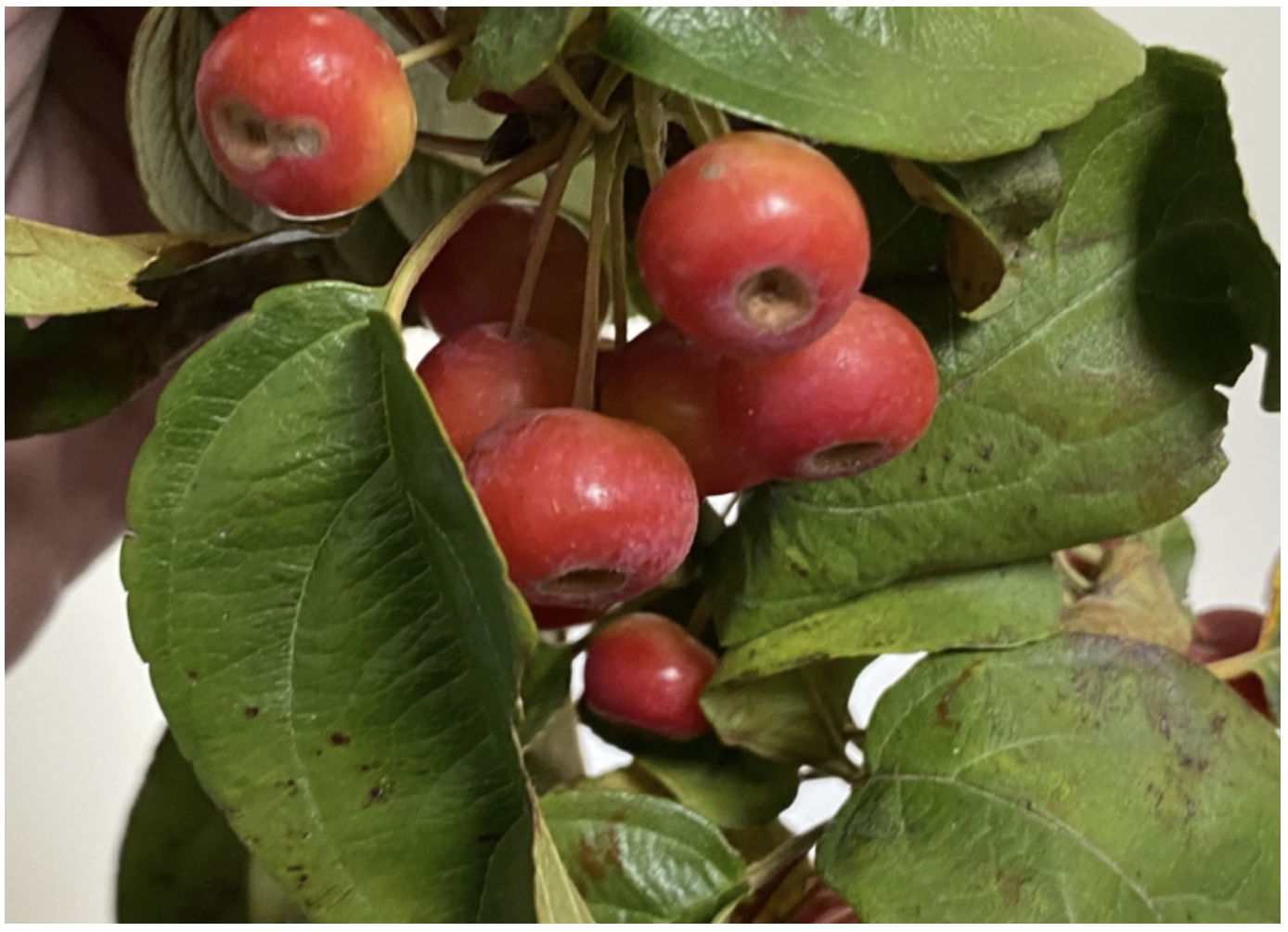by Suzanne Thorin
Many botanical artists took note of the beautiful United States Department of Agriculture (USDA) catalog of American fruits and nuts when it was published in 2021 by Atelier Editions. The catalog contains selections from the 7,500 watercolor paintings commissioned by USDA’s Division of Pomology from 1886 to 1942. In addition to apples, which comprise over half of the USDA’s watercolor collection, it contains citrus, berries, melons, and drupes, even nuts, and it illuminated the work of many female artists.
Because my final project in the Wellesley Friends Botanical Program is apples, I bought the book immediately. At that point, being captivated by the art, I had not yet thought about the USDA actually growing apples. But, embedded in the introduction by Adam Leith Gollner, is a reference to the Department’s genetic apple holdings being found in Geneva, New York. That’s upstate New York just north of the largest of the finger lakes, Seneca.
Mr. Gollner describes his walk through the apple orchard in Geneva:
On that autumn day, apples were in full season, and I was able to walk through the rows of apple trees, each different from the next, sampling to my heart’s content. Some of them were as sweet as candied apples, while others were bitter and crabby. One variety tasted like raspberry pie, another like it had been infused with rosewater, and still others gave off the distinct savor of fennel seeds or mint. ( An Illustrated Catalog of American Fruits and Nuts, Introduction, page 8. )
I knew then that I had to visit the research orchard and pick the apples I would paint for my final project. I found out that Ben Gutierrez (PhD) is the curator of the USDA’s apple and tart cherry collections in Geneva, and I contacted him. The orchard is not open to the public, except for an open house one day a year. But he was interested in the fact that I am a botanical artist and offered me unaccompanied access for as long as I needed. In return, I promised I would send pictures of the final paintings.
We found two days in September that suited the three of us. I picked up my sister at the Syracuse Airport and we drove south to Geneva last September 20th. The weather the next day was perfect for apple picking.
This orchard’s function is to provide genetic preservation, and it does not have a commercial purpose. Its focus is to keep alive and healthy all the species of the Malus domestica. The trees are cared for and sprayed as needed by Cornell University specialists, but other than that, the apples simply grow and then drop to the ground. No one polishes or picks the apples. Many have bloom still on them.
After my sister Tina and I met Ben, he guided us to the orchard, which is called McCarthy Farm, just a few miles from his office. Then, he said, enjoy yourself. Pick as many apples as you wish, plus leaves and branches. He took us to the core collection, 3 rows of 258 accessions of apples. Ben called them the greatest apple hits. In our brief visit of a day and a half, the core collection was perfect.
Each of the trees is labeled with the species, cultivar name, Plant ID number, and the GMAL number which linked it to GRIN Global, USDA’s national database and Germplasm Resource Information Network (GRIN). These numbers are used by those who want specimens from the catalog.
We investigated most of the day, and when an apple caught our eyes, we took samples from the tree, plus a branch or two and leaves and documented the apples with pictures and labels.
By the end of the day, the trunk and back seat of my car were filled with our treasures; we transported all the apples and leaves and stems to our hotel room and filled vases with water and the refrigerator too. Then my sister and I celebrated over a fabulous dinner, which included NY State wine.
When I arrived home and saw the bounty, I was overwhelmed. The picture below is just one table of several. Other than the trip back to Hanover in a relentless Massachusetts rain, figuring out what to do next was the hardest part. I read about preserving apples and did what I could with my two refrigerators. In some cases I had mismatched the apples and labels. In the worst cases different specimens, and Ben helped me figure everything out from the database when I needed confirmation.
Eventually I selected 6 apples and drew the beginnings of my painting, along with some value studies. Having no apple blossoms, I am thinking about returning in the spring or Ben might be open to sending me pictures.
Overall, this was a great adventure only five hours from home. I am not David Fairchild, but I did become a plant explorer for a couple of days.
One of three tables:
My colleagues, Tina and Ben:







